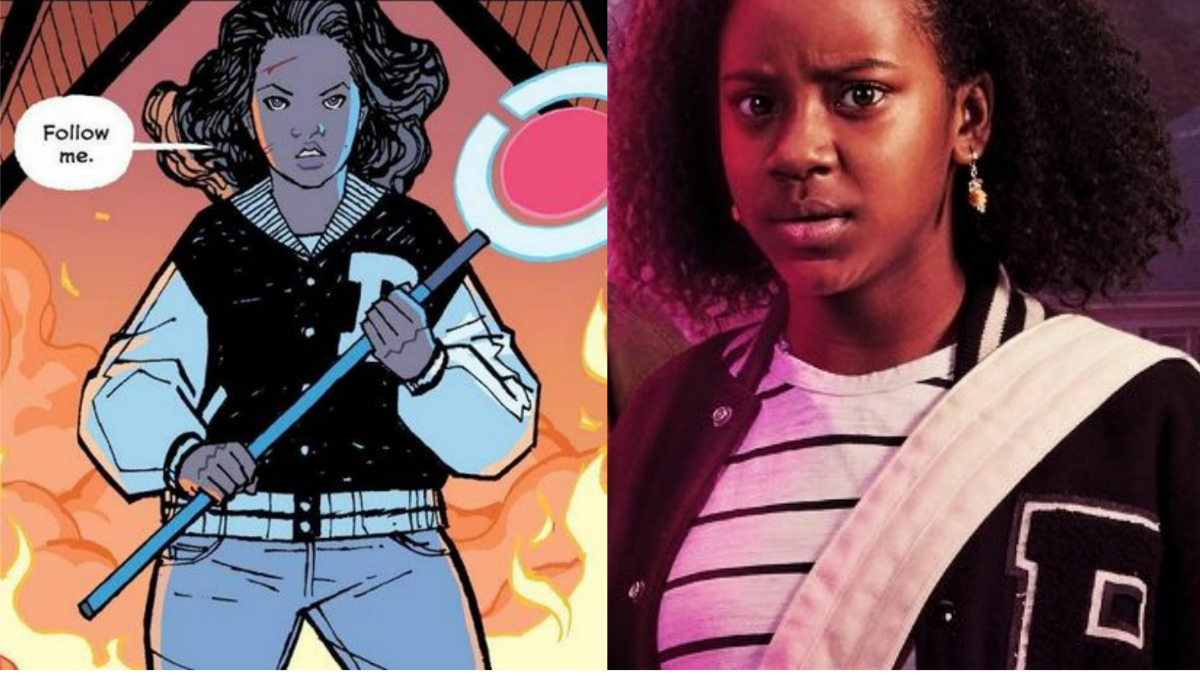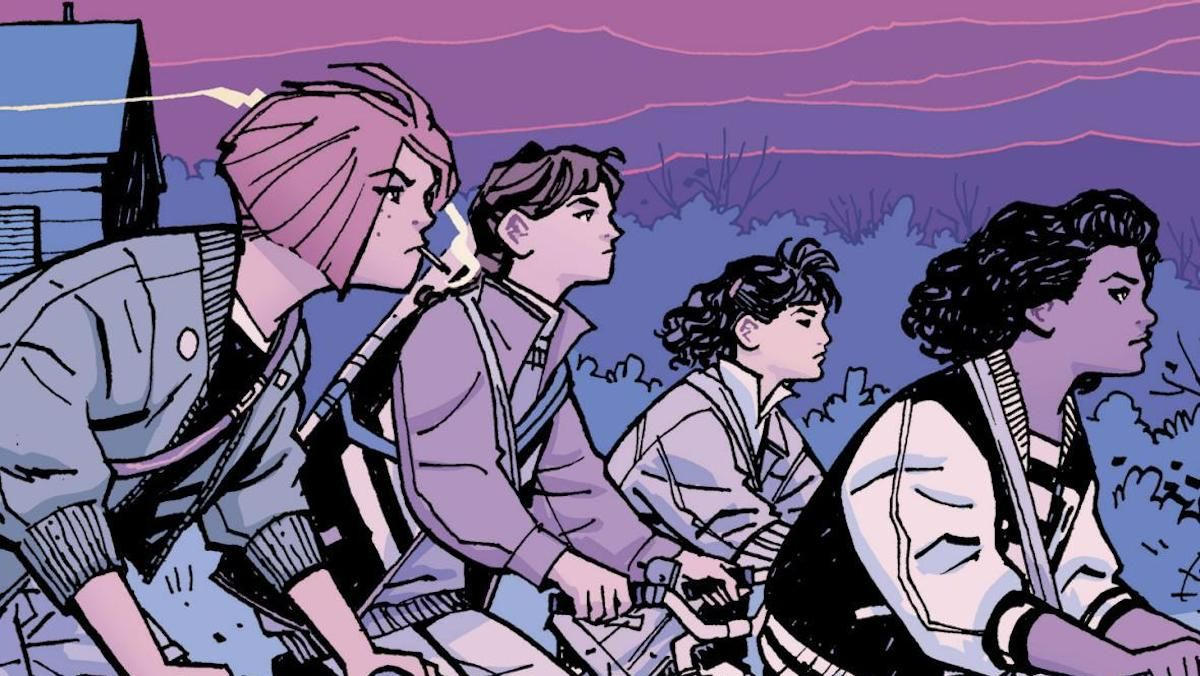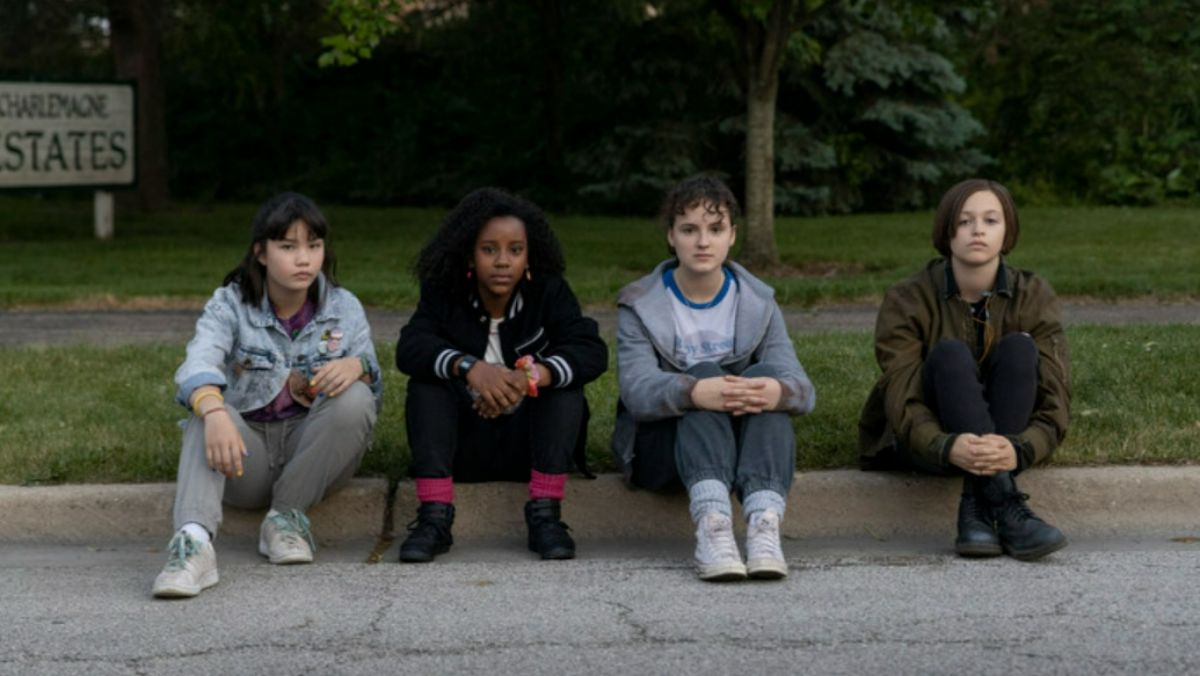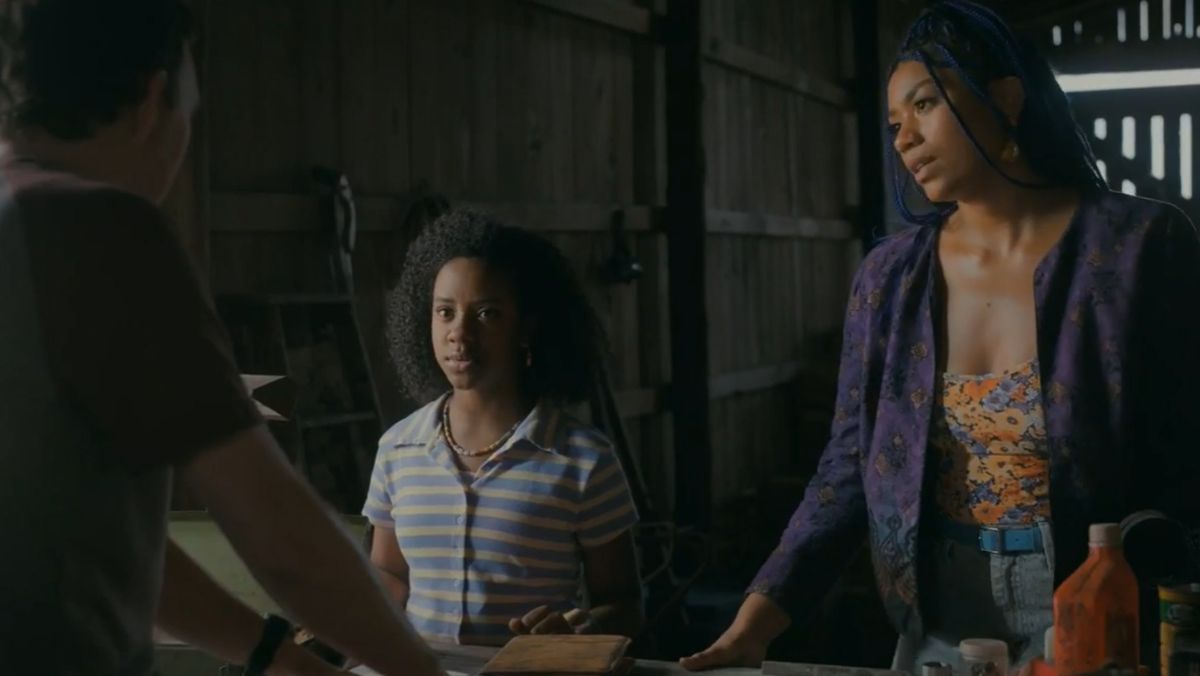Falling in love with a comic book series is one of life’s joys. There’s the thrill of reading it the first time as you escape into a new world, allowing its magic to overtake you. Surprise, delight, disbelief, and sometimes emotional anguish rock you as you roll through the pages. What will happen next? Ahhh the waiting for the following issue! When it’s over, you cannot wait to read it for a second, third, and maybe tenth time. Subsequent reads usher in the discovery of subtext you missed in previous rounds.
And, as you evolve as a person, you discover new depths of your love for certain characters and storylines. That’s how I feel about Paper Girls and Tiffany “Tiff” Quilkin. Her print story continues to be one of my favorites and, after seeing Camryn Jones and Sekai Abenì bring her to life in Paper Girls, my love for Tiff has grown exponentially.

I began reading Paper Girls in early 2016 when it only had a few issues under its belt. After seeing Cliff Chiang’s brilliant artwork, I naturally gravitated towards Tiffany. She was the kind of character I always sought as a kid: a bold Black girl who wasn’t afraid to get into the action. When Tween Tai would daydream about what she’d do in some unprecedented situation, it looked a lot like what Tiff did in the comics. She wasn’t just a placeholder character or someone who only existed to further the story of her white counterparts. No, Tiffany played a vital role within Paper Girls‘ narrative.
She went through her own journey of self-actualization, confronting the future her, and taking leaps of faith (literally and figuratively) as she fights for her friends. She’s the gamer and techie who asks a zillion questions and figures out strange dream conundrums. And, if it weren’t for her, everyone wouldn’t have made that final reunion to go home. Watching her desperately say “We’re not just paper girls, we’re friends…” as their story comes to a heart wrenching close still brings a tear to my eyes. Tiffany continues to be one of my favorite comic characters of all-time.

So, you can imagine my delight when I found out that a Paper Girls TV series was coming. I couldn’t wait to see Tiffany in live-action with her walkie-talkies and her determination to get s**t done. (Also, I really want that jacket.) And, both Camryn Jones and Sekai Abenì did not disappoint in Paper Girls. Tiffany (and all the girls, tbh) are by far the best part of the series.
Live-action Tiff ups the ante, becoming the leader among the girls. While the others are negative, whining, or sulking that they aren’t who they thought they would be, Tiffany is determined to figure out what’s going on. (I mean, I get it girls. You are children and it is totally okay to freak out and be upset.) She realizes that they didn’t ask to be there, but they have to do something to save themselves. And, she makes a little time to verbally shank Larry before getting exactly what she wants.
“You’re gonna give me that code because you owe me big time. You betrayed me and my friends! Four twelve year old girls. And then when you promised to take us home, you left us trapped here in 1999 and a woman died… We didn’t ask for this. But now we’re here in a random time that isn’t ours. And who knows if we’ll ever get home, all because of you. So give us the cipher. Because just seeing you again, let alone having to ask you for help, makes me sick to my stomach.”

Love to hear it! She makes things happen, especially following adult Erin’s death. The vital information from Larry, the components to accurately determine foldings… all of that comes from Tiff. She quickly catches onto the concept of ablution and is the keeper of Larry’s book of foldings, using her STEM skills to decode where and when the next one would be. She encourages the girls to stick together and not give up hope that they will make it back to 1988. And, when Tiffany links up with her older self in 1999 in Paper Girls? Perfection.
Watching older Tiff’s immediate investment in this time traveling conundrum is incredibly fun. But, the dynamic between the Tiffanys with the older version being very realistic about how life can change vs. younger Tiff being driven almost to a fault at times struck a nerve with me. As an adult with a 12-year-old kid, it makes me think about Tiff from both perspectives. I remember my middle school self imagining a lofty future where I’d be a rich lawyer who wrote books and lived in a high-rise apartment in New York City. Boy, if she ever makes it to meet thirtysomething me, she will be quite disappointed.

Sure, I have a cool job. But the rich and living in NYC part didn’t quite pan out. Why? Because, like older Tiff, I came to the realization that things would not always go to plan. Life happens and my perspectives shifted. I didn’t want to be a lawyer. And, while I adore NYC, there are many things I appreciate about living in the South. I also look at my own kid, the ambitious and nerdy flute player who wants to be an Aerospace Engineer. Maybe that will come to fruition.
However, I always instill the understanding that plans can—and often do—change. And that is okay. Whatever a person does for a living should bring them some level of satisfaction and the room to experience life outside of work. And maybe, just maybe kid, cut your future self some slack. You are not a failure because you didn’t check every single box you thought you would by XYZ age. I’d like to believe that Tiff will still hold onto her ambitions because dreams are great things. But, like her older self says, be flexible, take time to blast Whitney Houston, and just be.
While 1999 Tiffany is a huge help and ends up getting zapped into somewhere (hmmmm), there is a ton of hope in this character’s future. Paper Girls ends by affirming that Tiffany becomes a Doctor in the future and her institute works with Dr. Braunstein. We don’t know if Paper Girls will get another season to explore all of this. But, no matter what, Tiffany Quilkin will be a hero in my book in all her iterations.

